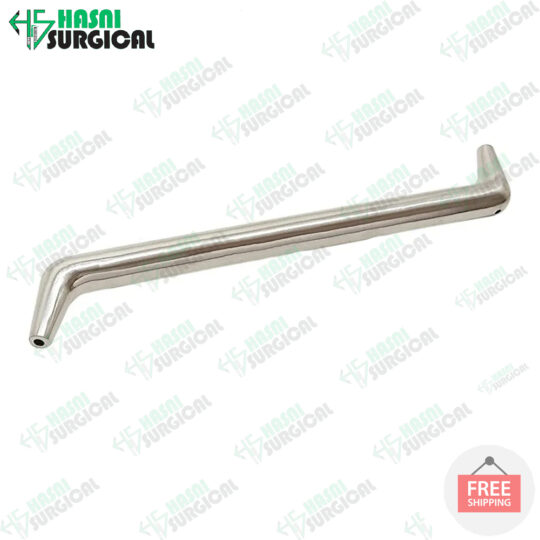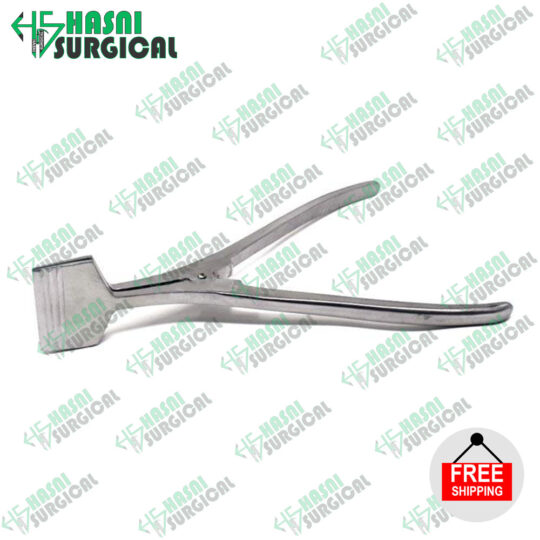Best Hemostatic Cautery handle ophthalmic eye instruments
24.99$
Description
Hemostatic Cautery handle Cataract Ophthalmic Eye Microsurgery Instruments: Quality and Performance at Their Best
In the field of ophthalmic surgery, particularly in cataract and eye microsurgery, the precision and quality of ophthalmic eye instruments play a crucial role. Every detail matters in these delicate procedures, where high-quality, reliable instruments can mean the difference between a successful operation and a complication. When selecting instruments for ophthalmic procedures, especially those designed for cataract surgeries, high standards of manufacturing, precision engineering, and durability are non-negotiable. Here’s an in-depth look at the attributes that make these instruments an essential choice for ophthalmologists worldwide.
1. High-Quality Medical-Grade Stainless Steel
Cataract eye microsurgery instruments are meticulously crafted from high-quality medical-grade stainless steel. This material is chosen not only for its durability and corrosion resistance but also for its biocompatibility, making it safe for use in sensitive surgeries. The stainless steel used in these instruments undergoes stringent testing to meet international standards, ensuring it is safe and durable in sterile surgical environments. The stainless steel’s strength also contributes to the instruments’ longevity, allowing them to withstand repeated sterilization processes without losing their structural integrity. This ensures that surgical tools remain sharp and precise, essential factors in delicate ophthalmic procedures.
2. Engineered for Optimal Performance and Longevity
Manufacturers of ophthalmic eye instruments prioritize performance and longevity in their designs. These instruments are made to offer consistently high performance across hundreds of uses. Due to the delicate nature of eye surgeries, especially cataract removal, the tools need to be exceedingly precise to minimize trauma to the eye tissue. Specialized manufacturing techniques, including precision machining and laser-guided polishing, are employed to give each tool a flawless finish. The longevity of these instruments is also a key selling point. Eye surgery instruments are often costly investments, and their longevity directly contributes to reduced replacement costs over time, providing better value to healthcare facilities.
3. Guaranteed Quality and Customer Satisfaction
When investing in surgical tools, particularly for such critical operations, customers need confidence that they are receiving the best available quality. Reputable manufacturers of ophthalmic microsurgical instruments offer guarantees on their products, giving surgeons the peace of mind that they are working with reliable, well-crafted instruments. Customer satisfaction is achieved through stringent quality control procedures, where each instrument is inspected for flaws before it leaves the production facility. Any instrument that doesn’t meet these strict standards is reworked or discarded, ensuring that every tool meets the high standards demanded by the medical profession.
4. Advanced Sterilization Compatibility
Sterilization is a key consideration for any reusable medical instrument. Ophthalmic cataract surgery instruments are designed to withstand various sterilization methods, including autoclaving, without losing their performance or durability. This adaptability is made possible by the high-quality stainless steel used, which is resistant to corrosion and discoloration. Furthermore, the seamless design of these instruments minimizes crevices and joints where contaminants could accumulate, making it easier to clean and sterilize them thoroughly. With high sterilization compatibility, these instruments maintain their hygienic properties over long periods, ensuring patient safety and reducing the risk of infection during eye surgeries.
5. Precision Design for Delicate Eye Procedures
Ophthalmic cataract eye microsurgery involves working with delicate tissues, often at a microscopic scale, where precision is critical. These instruments are engineered with fine, sharp edges and delicate structures that make them well-suited for the intricate maneuvers required during eye surgery. The precision of these tools enables surgeons to perform complex procedures, such as phacoemulsification and lens implantation, with accuracy and control. Their lightweight design minimizes hand fatigue, allowing surgeons to maintain a steady hand over extended procedures, which is particularly valuable in delicate operations like cataract surgery.
6. Cost-Effective Investment in Surgical Quality
High-quality ophthalmic cataract microsurgical instruments, while an investment, offer a cost-effective choice for medical professionals. Durable and crafted for long-term use, these instruments save medical facilities from frequent replacements, ultimately lowering the long-term costs of medical equipment. Additionally, with their strong resistance to wear and tear, these instruments remain in excellent working condition for many years, further contributing to their value as a cost-effective solution. Hospitals and clinics worldwide appreciate these tools for their blend of quality and affordability, making them an ideal choice for high-performance ophthalmic procedures.
7. Aiding in Superior Surgical Outcomes
The quality of surgical instruments directly impacts the outcomes of procedures. In cataract surgery, where precision is paramount, having the best tools enhances a surgeon’s ability to deliver successful results consistently. Instruments that are reliable, easy to handle, and resistant to wear contribute to positive outcomes, minimizing potential risks and complications. Whether removing a cataract or inserting an artificial lens, a well-designed instrument allows the surgeon to execute every step of the procedure smoothly and with precision.
8. Customer-Driven Innovation
Many manufacturers continually innovate based on customer feedback, enhancing the design, materials, and usability of their ophthalmic instruments. Surgeons’ needs evolve with advancements in surgical techniques and technology, and high-quality instrument providers respond by updating their product lines. This focus on innovation ensures that ophthalmic cataract eye microsurgery instruments are designed to keep pace with the latest medical developments, meeting the needs of today’s surgeons while preparing for the future.
Conclusion
Ophthalmic cataract eye microsurgery instruments are essential tools in the field of eye surgery, providing surgeons with precision, durability, and reliability. Crafted from high-quality medical-grade stainless steel and designed for optimal performance, these instruments are valuable investments in any surgical setting. With rigorous quality control, customer satisfaction guarantees, and advanced sterilization compatibility, these instruments meet the highest standards in medical equipment manufacturing. In the hands of skilled surgeons, these tools support superior patient outcomes, proving their worth as indispensable components of cataract and other eye surgeries. Whether you’re a surgeon seeking new instruments or a healthcare facility aiming to equip your ophthalmic department, investing in high-quality microsurgical tools is a step toward excellence in eye care.

































Reviews
There are no reviews yet.